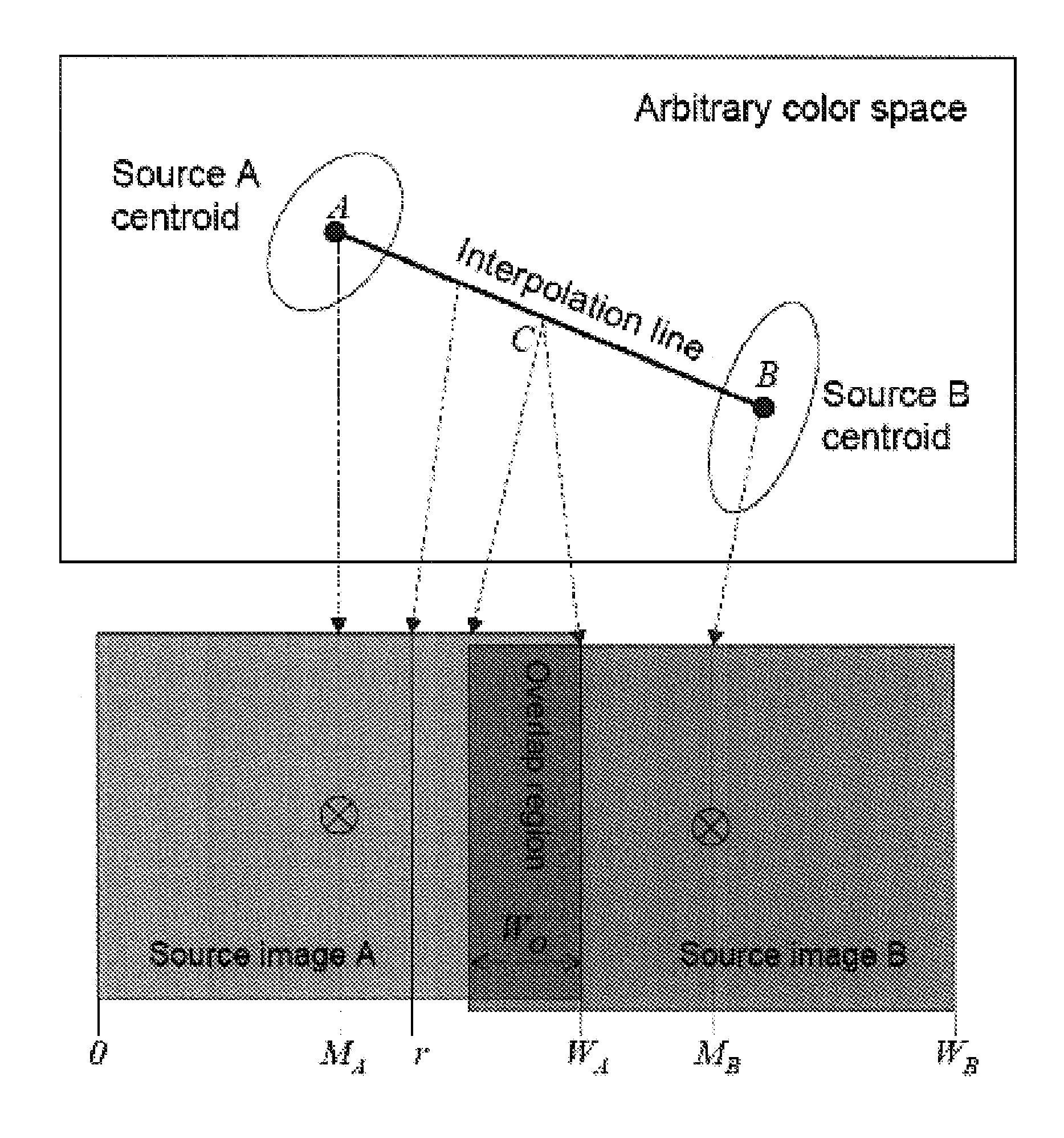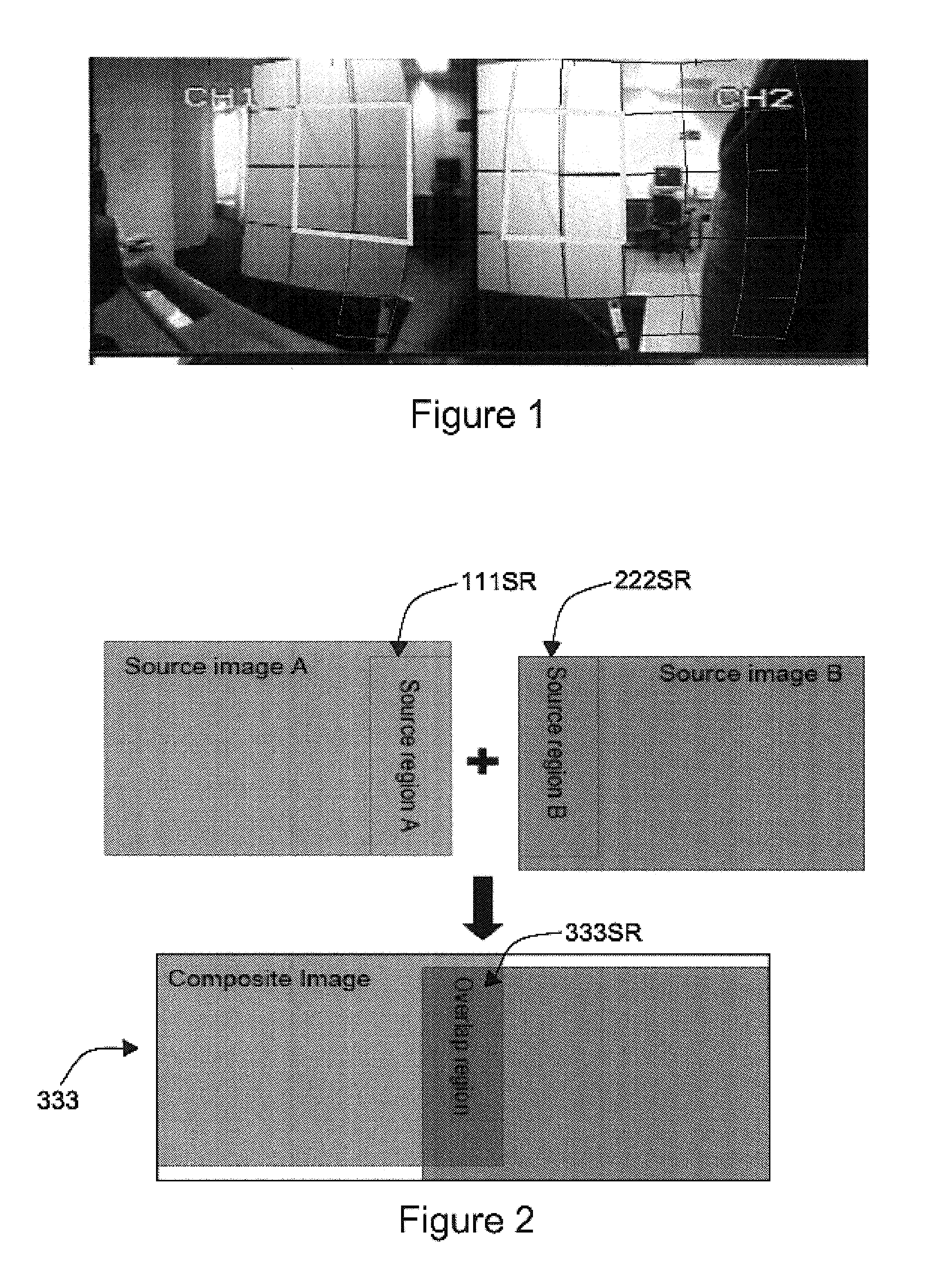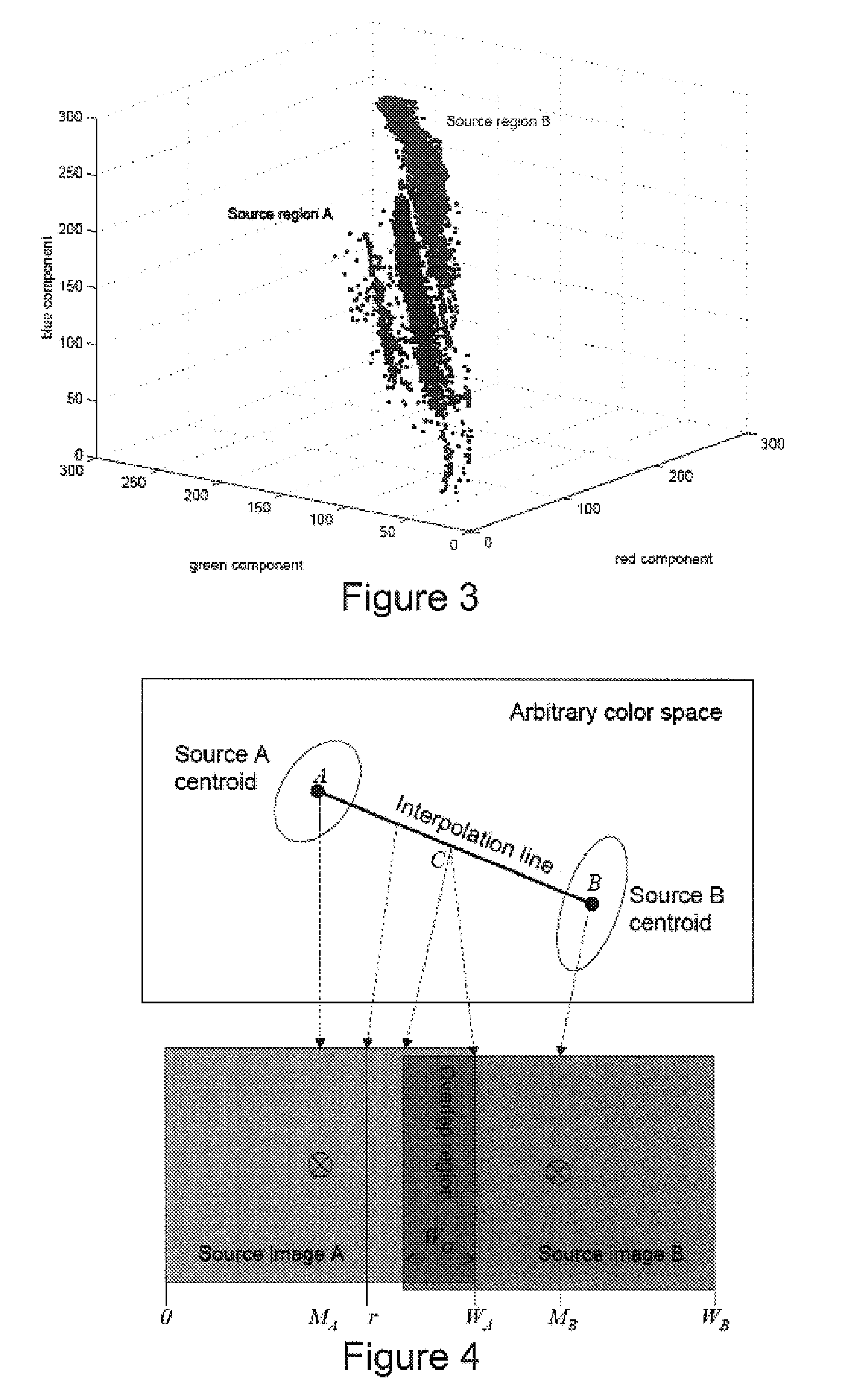Methods for multisource color normalization
a multi-source, color-normalization technology, applied in the field of digital image processing, can solve the problems of sacrificing the dynamic range of the multi-camera system, time-consuming, and calibrating the color balance and shutter speed of all video cameras, and achieve the effect of reducing the color and intensity mismatches of images
- Summary
- Abstract
- Description
- Claims
- Application Information
AI Technical Summary
Benefits of technology
Problems solved by technology
Method used
Image
Examples
Embodiment Construction
[0032]Multicamera panoramic imaging systems are becoming increasingly popular. However, a major problem of multicamera or multidisplay imaging systems is the consistency of color and brightness across image boundaries. When constructing an image by concatenating images from multiple sources, color and intensity differences can lead to objectionable seam artifacts, even when the optical geometry is nearly perfect. For multicamera systems, different scene illumination, automatic gain control, and color variabilities inherent in analog video formats can contribute to intensity differences across image seams.
[0033]FIG. 1 shows an example of two overlapping images formed by two video cameras. In FIG. 1, a white board has a substantially different intensity of colors in the two images because of the gain control differences between the different cameras. Additionally, camera and / or display lenses, can have non-uniform brightness responses across their field of view, especially at wide ang...
PUM
 Login to View More
Login to View More Abstract
Description
Claims
Application Information
 Login to View More
Login to View More - R&D
- Intellectual Property
- Life Sciences
- Materials
- Tech Scout
- Unparalleled Data Quality
- Higher Quality Content
- 60% Fewer Hallucinations
Browse by: Latest US Patents, China's latest patents, Technical Efficacy Thesaurus, Application Domain, Technology Topic, Popular Technical Reports.
© 2025 PatSnap. All rights reserved.Legal|Privacy policy|Modern Slavery Act Transparency Statement|Sitemap|About US| Contact US: help@patsnap.com



